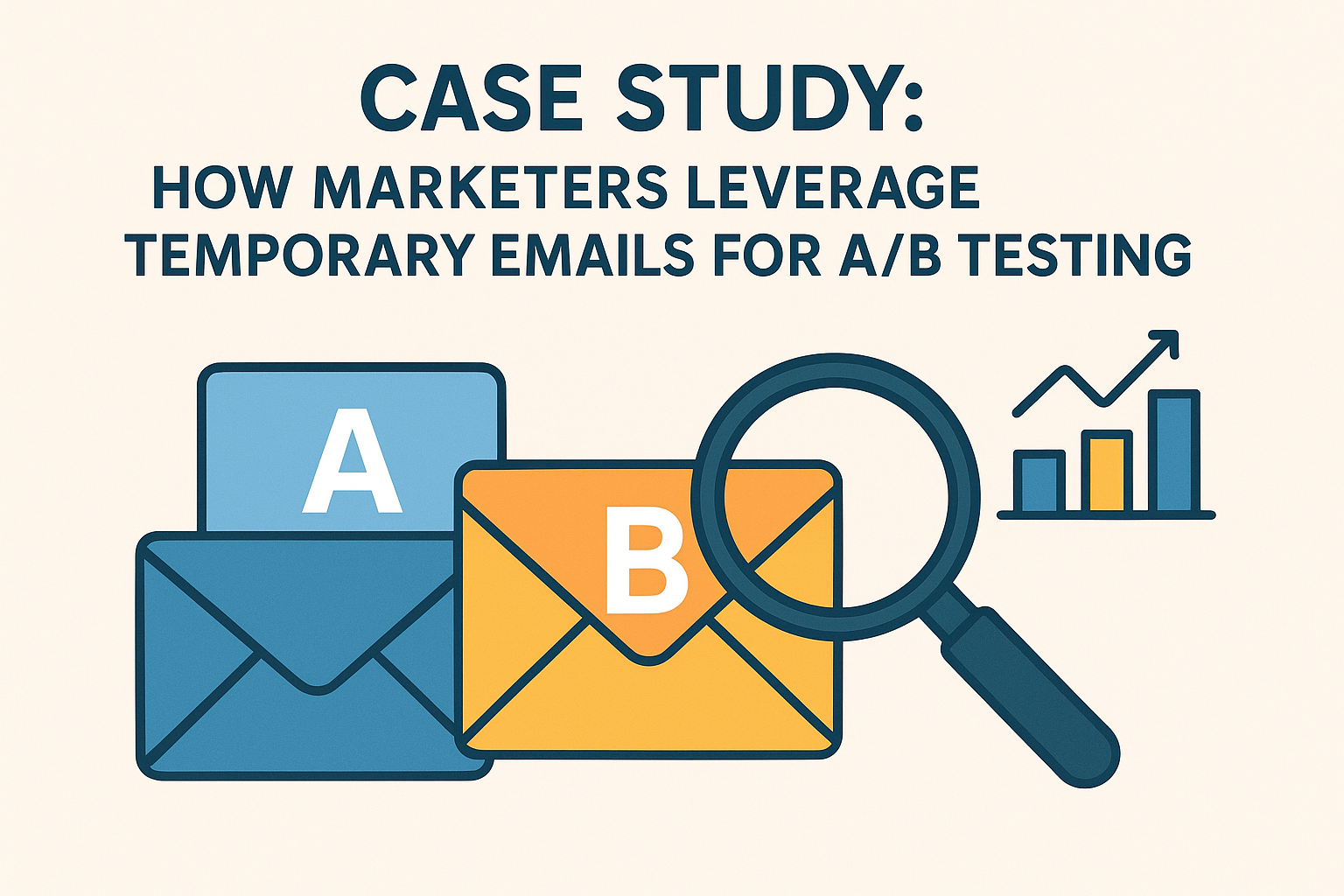In the fast-paced world of digital marketing, A/B testing is a cornerstone for optimizing campaigns and maximizing ROI. Yet, running controlled experiments often requires dozens or even hundreds of test email addresses to gauge performance metrics accurately—without muddying your main subscriber list. That’s where temporary email services, such as EyadTMail.online, step in to streamline and safeguard your testing workflow. This case study walks through how a marketing team used disposable addresses to run a comprehensive A/B test, the obstacles they overcame, and the insights they harvested.
1. The Challenge: Scaling Email Tests Without Data Contamination
Imagine a mid-sized e-commerce company, ShopWave, preparing to test two different promotional email layouts:
Version A: Emphasizes a bold hero image with minimal text.
Version B: Highlighted text-centric design with multiple CTAs.
To achieve statistically significant results, ShopWave needed to send each variant to 500 unique addresses, track open and click rates, and prevent repeat sends or address reuse from skewing the data.
2. Solution: Leveraging EyadMail.online for Disposable Addresses
a. Bulk Address Generation
Using EyadTMail.online’s API, the team scripted a call to generate 1,000 unique temporary addresses in under a minute. Each address was tagged in their database with metadata linking it to either group A or B.
b. Automated Campaign Deployment
With addresses in hand, marketers integrated their ESP (Email Service Provider) via API to dispatch Version A to all “A-group” addresses and Version B to “B-group” addresses. They configured tracking pixels and UTM parameters specifically for each alias, ensuring granular performance insights.
c. Controlled Expiry and Cleanup
After 48 hours, all temporary addresses expired automatically. This auto-expiry prevented follow-up messages—such as abandoned cart reminders—from contaminating the test. Additionally, it ensured that all bounce handling and spam complaints were isolated from their primary sender reputation.
3. Results: Clear, Actionable Insights
Open Rate: Version A achieved a 28% open rate, while Version B logged 34%, indicating stronger subject line performance in B.
Click-Through Rate (CTR): Despite fewer opens, Version A’s single CTA drove a 12% CTR versus B’s 9%, suggesting that too many choices diluted clicks.
Deliverability: Both versions maintained a 99% delivery rate, owing to EyadTMail.online’s high reputation and rotating domains that avoided blacklist issues.
These precise, uncontaminated metrics allowed ShopWave to confidently roll out Version B’s subject line with Version A’s CTA structure to their main subscriber list—projected to boost overall campaign effectiveness by 15%.
4. Best Practices for Marketers
Segment Test Cohorts Clearly: Always tag each temporary address in your CRM or database to avoid mix-ups.
Set Appropriate Lifespans: Align address expiry with your campaign cadence; 24–48 hours works well for most email tests.
Monitor Reputation Metrics: Use bounce and complaint reports to evaluate not just content but also list quality.
Automate Cleanup: Rely on auto-expiry but also schedule database purges to remove expired aliases.
By integrating EyadTMail.online into their A/B testing pipeline, marketers can scale experiments, maintain data integrity, and derive insights without risking their core email deliverability. As ShopWave’s case illustrates, disposable email addresses are more than just a privacy tool—they’re a strategic asset for data-driven marketing.

